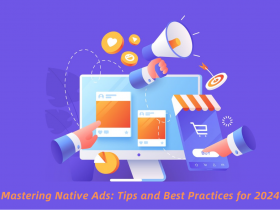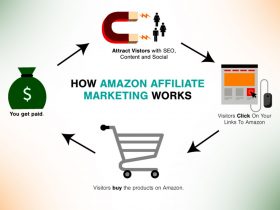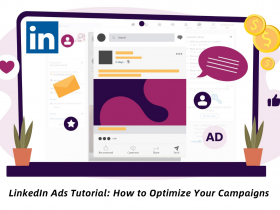These days a website is very useful to earn money, Because of which it is also necessary to keep that website secure.
So to keep that website safe and which thing is dangerous for the SEO of your website, I will tell you very well in this article.
Here are 15 types of backlinks that can pose a danger to your site and SEO efforts
-
Paid links:
Paid links are backlinks that are obtained by paying for them. This can be in the form of paying a website owner or a link building service to include a link to your site on their page. Paid links are considered a violation of Google’s guidelines, as they are seen as a manipulative tactic to improve search engine rankings. Websites that are found to be using paid links can be penalized, which can negatively impact their search engine rankings and online reputation.
-
Link exchanges:
Link exchanges are a practice where two website owners agree to link to each other’s sites in order to gain backlinks. Link exchanges used to be a popular tactic for improving search engine rankings, but they have since fallen out of favor due to the perception that they are manipulative and can result in penalties from search engines.
When done excessively or with low-quality sites, link exchanges can be seen as a form of spam and can harm a website’s search engine rankings. However, not all link exchanges are bad. If the exchange is done with relevant and high-quality sites, and the links are added in a natural and non-manipulative way, it can be beneficial for both parties involved.
-
Private blog networks (PBNs):
Private Blog Networks (PBNs) are a network of websites created for the purpose of building links back to a main website. These networks are often comprised of expired domains or sites that have been bought solely for the purpose of creating backlinks. PBNs are generally considered a black hat SEO tactic, as they are designed to manipulate search engine rankings and are a clear violation of Google’s guidelines.
While PBNs can be effective in generating backlinks and improving search engine rankings in the short-term, they are not a sustainable strategy for long-term SEO success. PBNs are often detected by search engines, and websites that are found to be using them can be penalized or even banned from search results. In addition, PBNs can harm a website’s reputation and credibility with users, which can ultimately harm its overall performance.
-
Comment spam:
Comment spam is a practice where website owners leave comments on other websites with the intention of generating backlinks to their own site. Comment spam is typically low-quality and irrelevant to the content of the page where it is posted.
Comment spam is seen as a black hat SEO tactic, as it is designed to manipulate search engine rankings and can result in penalties from search engines. In addition, comment spam can harm a website’s reputation and credibility with users, as it is often viewed as spam and can detract from the overall user experience.
While leaving comments on relevant websites can be a legitimate way to generate backlinks, it is important to do so in a natural and non-manipulative way. Comments should be relevant and add value to the conversation, and links should only be included if they are relevant to the content of the page.
-
Forum spam:
Forum spam is a practice where website owners post low-quality or irrelevant comments on online forums with the intention of generating backlinks to their own site. Forum spam is generally considered a black hat SEO tactic, as it is designed to manipulate search engine rankings and can result in penalties from search engines.
Forum spam can harm a website’s reputation and credibility with users, as it is often viewed as spam and can detract from the overall user experience. In addition, posting irrelevant or low-quality comments can also result in a user ban from the forum.
While participating in relevant online forums can be a legitimate way to generate backlinks, it is important to do so in a natural and non-manipulative way. Comments should be relevant and add value to the conversation, and links should only be included if they are relevant to the content of the forum thread.
-
Directory links:
Directory links are backlinks that are obtained by submitting a website to online directories. Online directories are websites that categorize and list links to other websites.
While directory links were once a popular way to improve search engine rankings, they are now generally seen as a low-quality link building tactic that can harm a website’s SEO efforts. This is because many online directories are low-quality and contain little value to users. In addition, Google and other search engines have become more sophisticated at identifying and penalizing low-quality directory links.
While there are some high-quality and relevant directories that can provide value to users, it is important to be selective in choosing directories to submit a website to. When submitting to directories, it is also important to ensure that the website is submitted to the correct category and that the website’s information is accurate and up-to-date.
-
Widget links:
Widget links are backlinks that are obtained by embedding a widget on a website that includes a link back to the site where the widget was obtained. While widget links can be an effective way to generate backlinks, they can also be a dangerous tactic if done in a manipulative or spammy way.
Widgets that are low-quality, irrelevant to the website’s content, or contain hidden or deceptive links can be seen as a black hat SEO tactic and can result in penalties from search engines. In addition, widget links can harm a website’s reputation and credibility with users if they are viewed as spammy or intrusive.
To use widget links effectively and safely, it is important to ensure that the widgets are relevant and provide value to users. The links should also be clearly labeled and not hidden or deceptive. It is also important to be selective in choosing which websites to embed widgets on, and to avoid using manipulative tactics to generate widget links.
-
Article directories:
Article directories are online directories that allow website owners to submit articles for publication. The articles typically include backlinks to the website owner’s site, and the goal is to generate traffic and improve search engine rankings.
While article directories were once a popular way to generate backlinks and improve SEO, they are now generally considered a low-quality and spammy tactic that can harm a website’s SEO efforts. This is because many article directories contain low-quality content that provides little value to users, and because Google and other search engines have become more sophisticated at identifying and penalizing low-quality article directory links.
While there are some high-quality article directories that can provide value to users, it is important to be selective in choosing which directories to submit articles to. Articles should also be high-quality, original, and relevant to the website’s content. In addition, it is important to ensure that the backlinks included in the article are relevant and not manipulative in nature.
-
Guest blogging networks:
Guest blogging networks are a type of private blog network (PBN) where website owners collaborate to create and publish guest blog posts on each other’s sites. The goal is to generate backlinks and improve search engine rankings.
While guest blogging can be a legitimate way to generate backlinks and improve SEO, guest blogging networks are generally seen as a black hat SEO tactic that can harm a website’s SEO efforts. This is because guest blogging networks are often used to create low-quality content that provides little value to users and to manipulate search engine rankings.
In addition, Google and other search engines have become more sophisticated at identifying and penalizing low-quality guest blogging network links. As a result, using guest blogging networks can result in a significant penalty to a website’s search engine rankings.
To use guest blogging effectively and safely, it is important to ensure that the content is high-quality, original, and relevant to the website’s content. In addition, it is important to be selective in choosing which websites to collaborate with, and to avoid using manipulative tactics to generate backlinks.
-
Link wheels:
A link wheel is a black hat SEO tactic that involves creating a network of websites or web pages that link to each other in a circular pattern with the goal of manipulating search engine rankings.
Link wheels typically involve creating a number of low-quality or spammy websites that link to a website or web page that the website owner wants to improve search engine rankings for. The low-quality websites then link to each other in a circular pattern, with the end result being a “wheel” of interconnected links.
Link wheels are generally seen as a manipulative and spammy tactic that can harm a website’s reputation and credibility with users. In addition, Google and other search engines have become more sophisticated at identifying and penalizing link wheel links.
To improve search engine rankings safely and effectively, it is important to focus on creating high-quality, original, and relevant content that provides value to users. Backlinks should be generated naturally through the creation of high-quality content, outreach to relevant websites, and other legitimate tactics.
-
Sitewide footer links:
Sitewide footer links are links that appear on every page of a website in the footer section. These links can be used to improve website navigation or to provide information about the website, but they can also be used as a black hat SEO tactic to manipulate search engine rankings.
Sitewide footer links can be dangerous for SEO because they can be seen as manipulative or spammy if they are used excessively or if the links are irrelevant to the content of the website. In addition, Google and other search engines have become more sophisticated at identifying and penalizing sitewide footer links that are used in a manipulative way.
To use sitewide footer links safely and effectively, it is important to ensure that the links are relevant and provide value to users. The links should also be used sparingly, and not be used in a manipulative way to improve search engine rankings. It is also important to be transparent about the use of sitewide footer links and to ensure that they are clearly labeled as such.
-
Blogroll links:
Blogroll links are links that appear on a website’s blogroll, which is a list of links to other websites that the website owner recommends or finds interesting. These links can be a legitimate way to provide value to users by sharing useful resources, but they can also be used as a black hat SEO tactic to manipulate search engine rankings.
Blogroll links can be dangerous for SEO because they can be seen as manipulative or spammy if they are used excessively or if the links are irrelevant to the content of the website. In addition, Google and other search engines have become more sophisticated at identifying and penalizing blogroll links that are used in a manipulative way.
To use blogroll links safely and effectively, it is important to ensure that the links are relevant and provide value to users. The links should also be used sparingly, and not be used in a manipulative way to improve search engine rankings. It is also important to be transparent about the use of blogroll links and to ensure that they are clearly labeled as such.
-
Low-quality web 2.0 sites:
Web 2.0 sites are user-generated content platforms that allow users to create and publish content, often with a social or community-based aspect. These sites can be used as a legitimate way to generate backlinks and improve SEO, but low-quality web 2.0 sites can be dangerous for SEO and harm a website’s reputation.
Low-quality web 2.0 sites are often created solely for the purpose of generating backlinks and are typically filled with low-quality, spun or duplicate content. These sites can be easily identified by search engines and are likely to be penalized for their low-quality content and manipulative tactics.
To use web 2.0 sites effectively and safely, it is important to focus on creating high-quality, original, and relevant content that provides value to users. The content should be unique and not spun or duplicated, and should be relevant to the website’s content. In addition, it is important to be selective in choosing which web 2.0 sites to publish content on, and to avoid using manipulative tactics to generate backlinks.
-
Affiliate links:
Affiliate links are links that are used to promote products or services and earn a commission for any resulting sales. Affiliate marketing is a legitimate way to generate income from a website, but affiliate links can be dangerous for SEO if they are used in a manipulative or spammy way.
Affiliate links can be seen as manipulative or spammy if they are used excessively, if they are not clearly disclosed, or if they are used to promote low-quality or irrelevant products or services. In addition, Google and other search engines have become more sophisticated at identifying and penalizing websites that use affiliate links in a manipulative way.
To use affiliate links safely and effectively, it is important to ensure that the links are clearly disclosed as affiliate links, and to only promote high-quality, relevant products or services that provide value to users. It is also important to use affiliate links sparingly, and not to rely on them as the sole source of income for a website. Finally, it is important to comply with any relevant regulations or guidelines related to affiliate marketing, such as the FTC’s guidelines on disclosure.
-
Links from non-English sites:
Links from non-English sites can be dangerous for SEO if they are used in a manipulative way or if the content of the linking site is low-quality or irrelevant. However, links from high-quality, relevant non-English sites can also be a valuable source of backlinks and improve a website’s SEO.
The key to using links from non-English sites safely and effectively is to ensure that the content of the linking site is relevant, high-quality, and provides value to users. The links should also be used in a natural and organic way, and not be manipulated or spammy. In addition, it is important to ensure that the anchor text used in the links is relevant and natural.
It is also important to consider the language and region of the linking site when using links from non-English sites for SEO. If a website targets a specific language or region, links from sites in that language or region may be more valuable. However, it is important to ensure that the content of the linking site is relevant and high-quality, regardless of the language or region.


















Leave a Reply